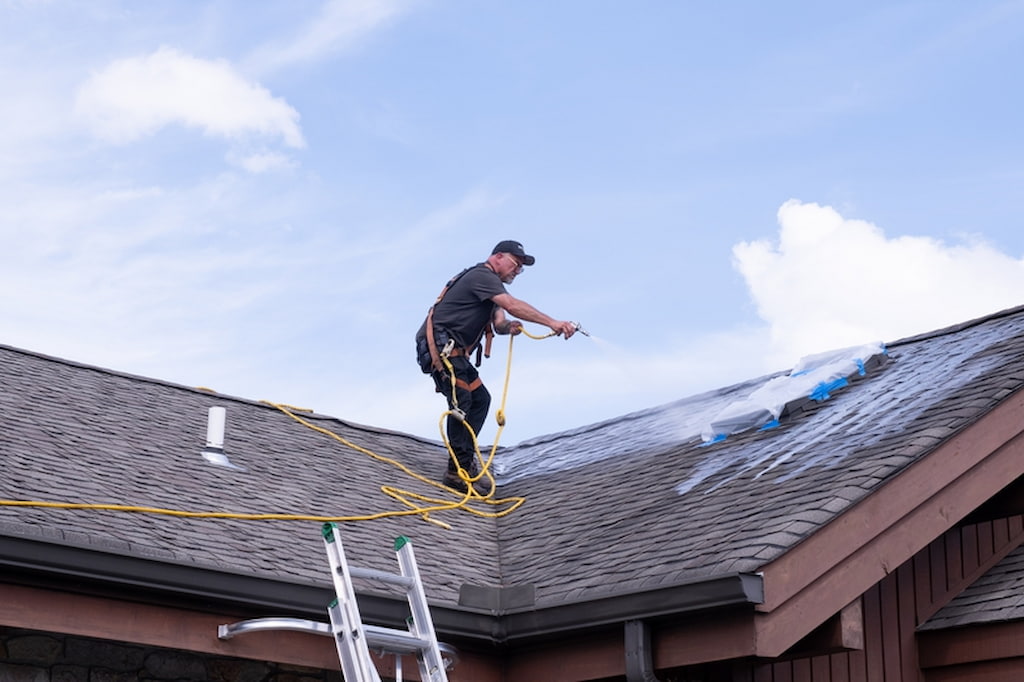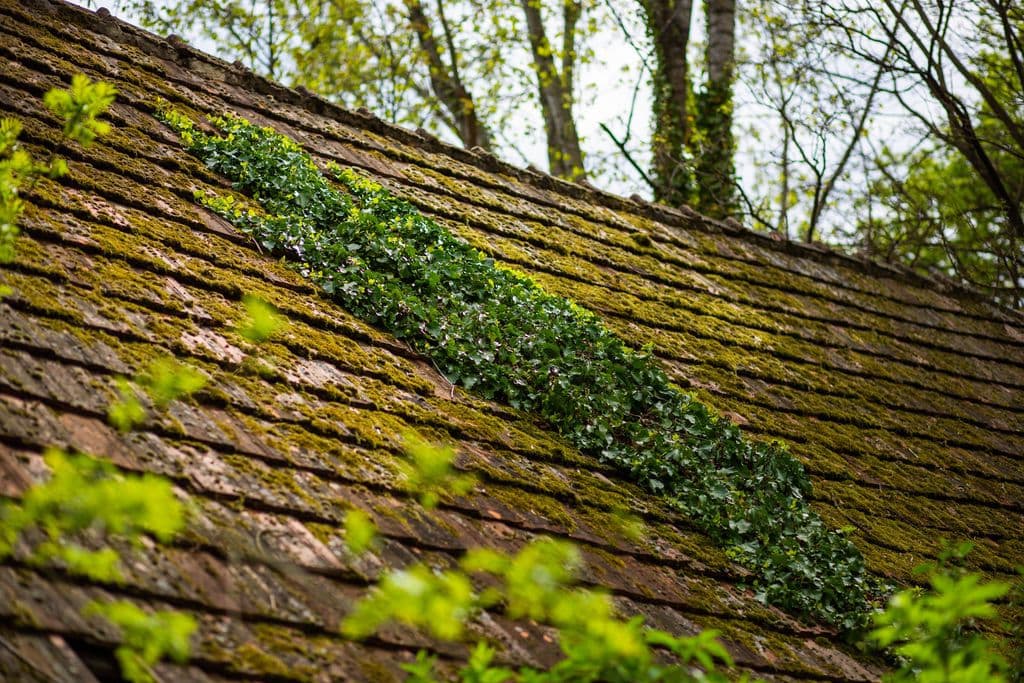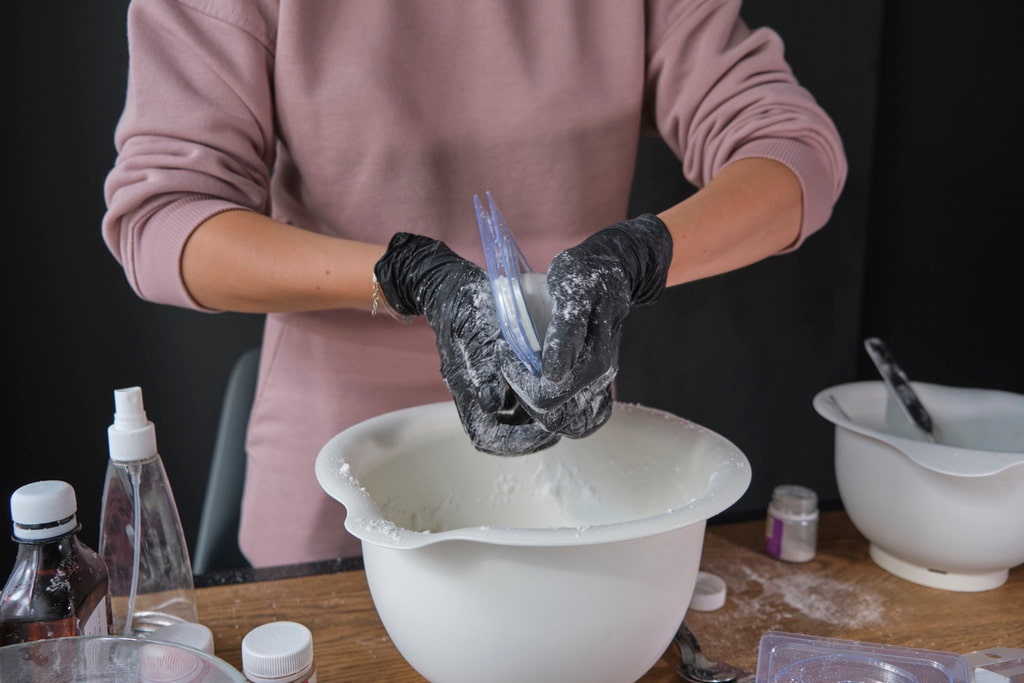If you live in the South, Midwest, or another region with warm, humid summers, you may notice stains and streaks showing up on your asphalt shingles. These stains look a lot like mold—but in fact, much of this is actually blue-green algae (Gloeocapsa magma). And in some cases, what looks like mold might actually be moss instead.
Knowing the difference between mold, moss, and algae makes it easier to recognize and remove each one before they can have negative consequences. Removing moss from your roof is essential for maintaining its integrity, algae is often an eyesore, and mold (although not as common) is a dangerous health hazard that can lead to severe health issues, including asthma and headaches.
It’s time to accurately identify what is growing on your roof, and take prompt action. We’ll start by showing you how to identify what’s growing on your roof, how to remove it, and how to use our roof rejuvenation treatment to prevent it from growing back.

In addition to extending the lifespan of your asphalt shingle roof by up to 15 years, our plant-based roof rejuvenation solution acts as a natural fungicide. That means it can help prevent new moss or algae growth after you have it applied.
You’ll just need to make sure you clean these growths from your rooftop before your Roof Maxx treatment is scheduled, since it won’t kill any that already exists. We recommend booking a service to have your roof cleaned before the day of your Roof Maxx procedure.

Algae, moss, and mold are easy to mix up if you don’t know the specific signs for each one. Here’s some advice on how to tell them apart:
Moss tends to grow upright while algae remain flat against the surface. So, if you notice dark streaks on the roof, it’s likely algae.
Algae is common in many parts of the United States. It often starts as airborne spores transported by wind, birds, or vermin before settling on the roof. Algae contain chlorophyll—the green pigments found in most plants. However, they are not plants but organisms spread by the spores.
The northern exposure of roofs usually offers the best chance for algae to flourish because that part of the roof is exposed to the least UV and dries last after morning dew and rain.
As algae grows and spreads, it begins to look like large black streaks on your shingles. It’s not always easy to identify, let alone remove. However, its removal is necessary if you want to maintain your home’s aesthetic appeal.
Algae and moss both thrive in damp and shaded areas. But while moss can directly harm the physical structure of your roof by lifting shingles and retaining moisture, algae’s primary damage is cosmetic. However, it can lead to mold.
Roof moss removal
If you notice a green fuzzy growth on your roof, it is most likely moss.
Moss loves cool, damp environments. If you have moss on your roof, it will be commonly found on the north slopes. It also grows beneath overhanging trees or overhanging sections of the roof, which cause shade that allows moisture to build up and create favorable growing conditions.
Moss is more green and fluffy-looking than algae, though it might appear browner during dryer seasons. Moss also grows up off the roof, while algae grows flush to the shingles and fixtures, staying flat and unobtrusive.
Moss spores, like algae, can reach roofs through wind, birds, squirrels, and other small animals. Once the moss spores land on a roof, they will gather in the spaces between shingles and eventually grow into thick, spongy moss.
A small amount of moss is relatively harmless—but left unattended, it can grow and eventually damage your asphalt shingles. Roof moss removal is necessary to prevent structural damage.
Mold is the result of algae left too long on a roof. Algae needs perpetual moisture to exist, so they grow best in humid areas. When algae keeps the roof damp for long enough, rot can set in, commonly leading to mold. Mold looks a lot like algae, but tends to be slimy with noticeable growth on/above the stain itself.
We do not recommend DIY removal for large amounts of mold, because breathing in mold spores can create a health hazard. Check out the step-by-step guide below to tackle moss and algae before mold growth can occur.

To reemphasize, we don’t recommend trying to handle major mold growth by yourself. But even moss and algae can be difficult to remove without help. We recommend hiring a professional in most cases.
However, if you are a handy person who is capable of climbing a ladder and not afraid of heights, you may be able to tackle algae or moss removal yourself. There are also a few methods that involve less risk.
If you decide to remove growths from your roof on your own, here are some tips:
The safest method for your roof and the environment is to use a product called Spray and Forget or Wet and Forget. These products can be purchased at most local hardware stores, put into a hose-end sprayer, and applied in many cases from the ground or a ladder at the edge of the gutter.
These methods often take 3-6 months to work, but they are the safest and easiest to apply. Take some time to research these products before use.
For quicker results, a more aggressive method is the use of water and bleach. Below are the general steps for this method:
Take precautions with this method, since this mixture can run off your roof and into your garden below. Before you spray, cover any plants you wish to protect and rinse down everything this solution may come in contact with.
If your roof is densely covered in moss, you might need to use a leaf blower to get rid of the remains. If you do use a leaf blower, never blow up against the bottom edge of the shingles, as this can break the seal tabs. Always blow from the peak down toward the gutter.
Remember: getting on top of your roof is risky, so it’s better to prevent these substances from growing in the first place or hire professional help if you need them removed.

Roof algae and moss usually grow because of moisture and bacterial growth. If you stop that growth from ever starting in the first place, you can help your roof last longer.
Here are a few ways to prevent future growth once you have gotten rid of moss and algae:
In addition to dealing with unwanted growths, there are some other ways to keep the roof above your head healthy and structurally sound. Here are a few habits for every conscientious homeowner:
And remember—treating your shingles with Roof Maxx is a great way to keep them durable and flexible, which helps protect your home from inclement weather and many other environmental conditions.
For a roof inspection you can trust and another way to extend the life of your roof, contact us at Roof Maxx. We’ll apply our sustainable, affordable treatment, which can add up to 15 years to the life of your roof with repeat applications once every 5 years. Some, but not all, of our dealers offer a roof cleaning service as well.
With our help, you can prevent new algae, moss, and mold from growing on your asphalt shingles, while restoring their condition and extending their lifespan for years to come. Find a Roof Maxx dealer near you today.
To remove moss, algae, or mold from the roof, follow these three steps:
Not usually recommended. If you plan on scraping moss, mold, or algae off your roof, you must be careful as you risk damaging the tile or shingles.
Using a soft brush and working downward can minimize potential damage. However, most homeowners lack the proper technique for removing these growths, so it’s best to leave the job to a professional.
A mixture of equal parts water and distilled white vinegar can effectively kill roof moss. Spray this solution onto the moss and let it sit for up to 30 minutes, then rinse with water and gently scrub away the moss.
Another natural method involves baking soda: sprinkle it over the mossy areas and rinse after a few days. Both approaches offer eco-friendly options.
Late spring or early summer is ideal for roof moss removal. The dry, mild weather not only ensures a safer rooftop work environment but also makes spotting and treating the moss easier than in other seasons.
With our five-year, transferable warranty, you’ll enjoy the peace of mind that your roof and entire home are protected.
Roof Maxx Technologies LLC